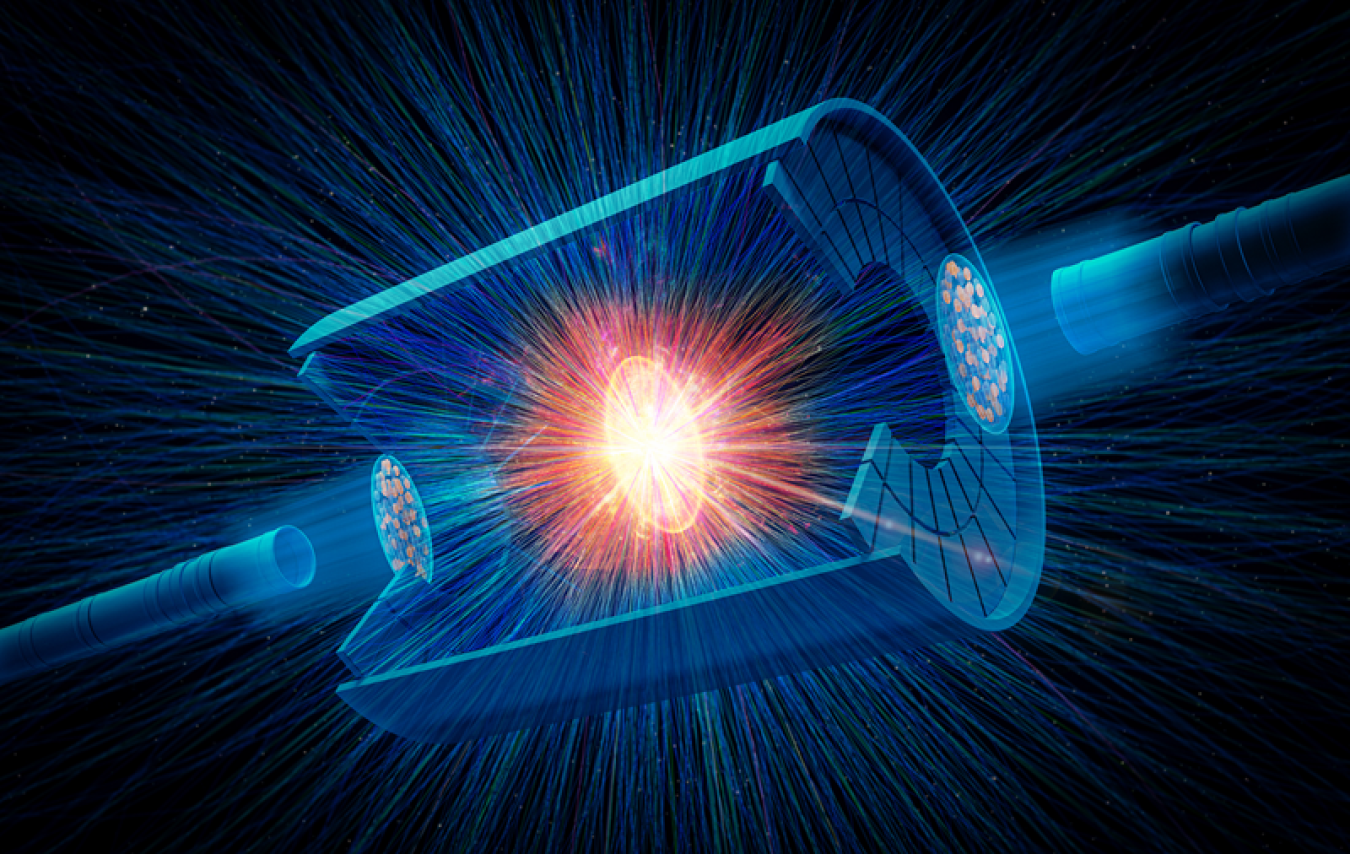The Science
Nuclear scientists have demonstrated a new way to reveal the shapes of atomic . The method analyzes the flow and momentum of particles emerging from high-energy of nuclei. Those flow patterns are linked to the shape of the blob of melted nuclear matter created in these collisions. The shape of the blob is in turn determined by the shapes of the colliding nuclei. In this study, researchers compared observed flow patterns with flow models for different sizes and shapes of melted matter. They then worked backwards from these patterns and shapes to reconstruct the original shapes of the colliding nuclei.
The Impact
Nuclear shapes play a role in many questions in physics. For example, nuclear shapes determine which atoms can split in , how heavy atomic elements in mergers of , and which nuclei might yield exotic types of . This new high-energy approach complements lower energy techniques for determining nuclear structure. It will add depth to scientists’ understanding of the nuclei that make up most of the visible matter in the current universe. It will also help researchers understand hot blobs of melted nuclear matter generated in particle collisions that mimic the conditions of the early universe.
Summary
Scientists in the STAR Collaboration used the STAR detector at the (RHIC), a Department of Energy Office of Science user facility at Brookhaven National Laboratory, to “image” nuclear shapes. RHIC’s high energy nuclear collisions melt the protons and neutrons of nuclei to set free their inner building blocks, . The shape and expansion of each hot blob of this melted nuclear matter — a (QGP) — is determined by the shape of the colliding nuclei. The shape and size of each QGP blob directly affect pressure gradients generated in the plasma, which in turn influence the flow and momentum of particles emitted as the QGP cools. The STAR scientists reconstructed nuclear shapes by running this relationship backwards. They compared the flow and momentum of particles emerging from collisions with hydrodynamic expansion models for different QGP shapes to decipher the shapes of the colliding nuclei. Their test case compared collisions of uranium nuclei —where they expected variation in flow patterns generated by differently oriented collisions of the oblong nuclei — with near-spherical gold-gold collisions that shouldn’t have such variation in QGP shape and size.
The results revealed uranium’s oblong shape, consistent with other methods, but also new details, including differences in the relative lengths of uranium’s three principal axes. The findings suggest that these nuclei are more complex than previously thought, and that the new method can provide deeper insight into other nuclei.
Funding
This work was supported by the Department of Energy (DOE) Office of Science, the U.S. National Science Foundation (NSF), and a range of international agencies and organizations listed in the scientific paper. In addition to using the Open Science Grid, supported directly by NSF, the researchers used computing resources in the at Brookhaven National Laboratory and the , a DOE Office of Science user facility at Lawrence

